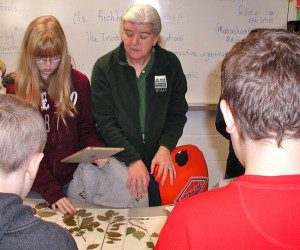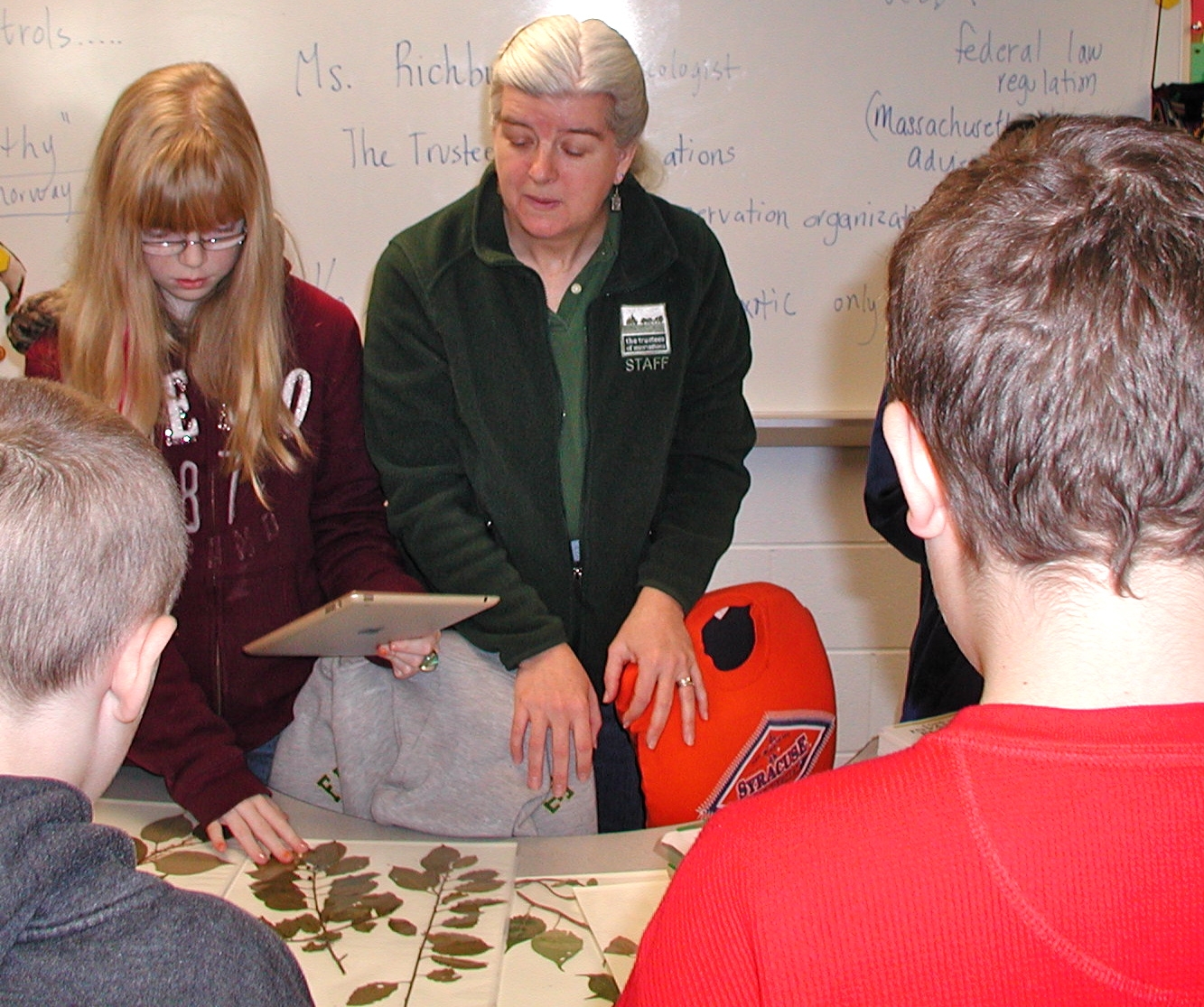
Sixth grader Jennifer Bourdon and Dr. Julie Richburg examine leaf samples of invasive species, in a unit on biodiversity taught by Ruth Harper. (Photo submitted)
HUNTINGTON –Dr. Julie Richburg, a regional ecologist with the Massachusetts Trustees of Reservations, visited Ruth Harper’s sixth grade classroom to quiz students on their studies of invasive species, and to offer additional information for their reports.
Richburg explained that there are 1700-1800 different plants in Massachusetts. Half of these were brought to New England from other parts of the world. Of those, 80 (or 10%) are considered invasive.
“What have you learned about the Norway Maple”, Richburg asked Marissa Mayhew, who had received the tree as her assignment for the unit.
“It’s a big tree and doesn’t allow smaller plants to grow,” replied Mayhew.
Richburg elaborated for the class. “It was brought in to plant in urban areas because it does well in poor soil,” she said. The unintended consequence was the spread of the plant to forested areas. “There’s a term called alleopathy, for plants that produce a chemical in the ground that prevents other seedlings from growing.” Richburg explained that the Norway Maple not only outcompetes other plants for light, but is also alleopathic.
Students also reviewed invasive pests, such as the Emerald Ash Borer, which sixth grader Jon Foley explained damages ash trees during the larvae stage. “This beetle is native to Asia and arrived in 2002. It was probably nested in packing materials that had been shipped overseas,” Richburg explained, noting that students in the class were age 1 when the beetle first arrived in the United States. “It was first spotted in Michigan, but has been moving east each year.” Richburg added that the big purple triangles that have been placed in ash trees are being used to detect the arrival of the pest in Massachusetts. The bugs are attracted to the color purple, and the triangles were baited with the scent of a rotting ash tree. The first Emerald Ash Borer was trapped in one of the triangles in August 2012 in Dalton. “There’s no good way to stop this bug,” noted Richburg.
Students discussed zebra mussels, which travel from lake to lake on boats. In their nymph stage, they gum up boats, water intake pipes, dams and water systems. Zebra mussels prefer water bodies that have calcium in the bedrock, which makes lakes in Berkshire County and the Housatonic River ideal for the species.
“Black swallowart is related to the milkweed, which provides food to monarch butterflies,” Richburg reported. “Due to its similarities, it also attracts monarchs but is poisonous to the monarch caterpillers.”
The class also discussed Didymos (an invasive algae), kudzu, mile-a-minute vine, and purple loosestrife—a pretty, flowering annual that destroys wetlands and habitat.
Massachusetts is one of a few states in the U.S. that has a prohibited plant list. For example, it is illegal to sell bittersweet wreaths or to sell burning bush—both popular items in the market.


